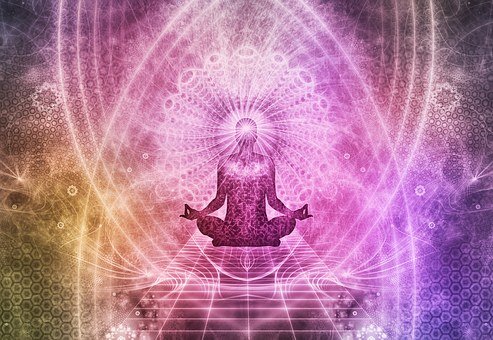What is a mudra? A mudra is a Sanskrit word meaning sign. You may have used a mudra in your yoga class. Or if you look at any image of the Buddha, he always holds a mudra. On a superficial level, a mudra is often indicated as a hand gesture. However, mudras have a deeper spiritual meaning. You could even say that your life, or your home, can be a mudra. It can be a symbol of great significance.
Buddhist imagery can be used in your home’s feng shui as a spiritual reminder. The Buddha represents the potential for true happiness and goodness that is inherent in every human being and every sentient being. If you want to take it a step further, choose a deity to display in your home holding a particular mudra to strengthen your spiritual aspiration.
When it comes to feng shui, Buddhist imagery is not at all an obligation. However, if this is something that appeals to you, you are reading the right article! Imaging any of the mudras (or even performing the mudras) can benefit any area of your home. Here are some of the most used Buddhist mudras and their meanings.
Dhyana: Mudra of meditation
Dhyana (or meditation mudra) is commonly used in the Mahayana tradition of Buddhism, a path of compassion for all living beings. In this gesture, you place the right hand over the left hand, palms up and thumbs lightly touching. The thumbs touch to symbolize the union and enlightenment of masculine and feminine in mind, body and soul. Generally, this mudra is represented with the hands resting on the knees or in the center of the heart.
Best Placement: Since this mudra is related to meditation and contemplation, it would be favorable for the meditation space in your home.
Bhumisparasa: Earth Touch Mudra
Bhumisparsha, the earth contact mudra, is one of the best known mudras. You will often see Shakyamuni, the historical Buddha, in a seated posture with this mudra. The right hand is placed with the tips of the fingers down and “touching the earth”, with the palm facing inwards. The left hand is in the mudra of meditation (dhyana). When the Buddha became enlightened, he touched the earth with this mudra during his meditation. The earth has been touched and witnessed awakening.
Best Placement: Since the Buddha touches the earth, it is a mudra that can ground and support you in any room of the house. The center of your home is also a recommended location as it is related to the earth element.
Vitarka: Mudra of teaching or discussion
The vitarka (teaching or discussion) is used in Buddhist iconography to symbolize the transmission of dharma, or the Buddha’s teachings of truth. In this mudra, the thumb and index finger touch, creating a circle that symbolizes an unbroken flow of wisdom. The other three fingers point to the heavens with the palm facing outward. This pose is held at approximately chest level.
Best Placement: This mudra can invite to receive and discuss teachings for growth and enlightenment in your life. Rooms such as the library, study, or knowledge area of the home would benefit from the imagery of this mudra.
Abhaya: Fearless Mudra
The abhaya mudra is a symbol of fearlessness and protection. The left hand is in the meditation (dhyana) mudra position, while the right hand is straight with the palm facing outward. All fingers are pointing skyward. In general, the right hand is at chest or shoulder level.
Best Placement: This mudra is related to the notion of fierce compassion, where you can let go when necessary. This mudra can be useful in your home when you need to strengthen your boundaries while opening your heart with confidence. Boundaries are tied to the earth element, so this mudra can invite more fearlessness in how you engage with the world.
Continue to 5 of 5 below.
Dharmachakra: Mudra of the Wheel of Dharma
The word dharmachakra refers to the wheel of dharma. Both hands are used in this mudra. The right index finger touches the right thumb and the left index finger touches the left thumb so as to create two circles (wheels). The left palm faces inward in front of the right palm which faces outward. This mudra is usually held in front of the heart.
Best Placement: The Buddha is said to have used this mudra when he first taught after his enlightenment. A wheel turns, and therefore represents movement and transition. Likewise, the location of the dharma chakra mudra in your home can inspire movement and flow.
We want to say thanks to the writer of this write-up for this amazing material
Buddhist Mudras (hand gestures) and their meanings in Feng Shui | Nostrodomus
Check out our social media profiles as well as other pages that are related to them.https://nimblespirit.com/related-pages/

